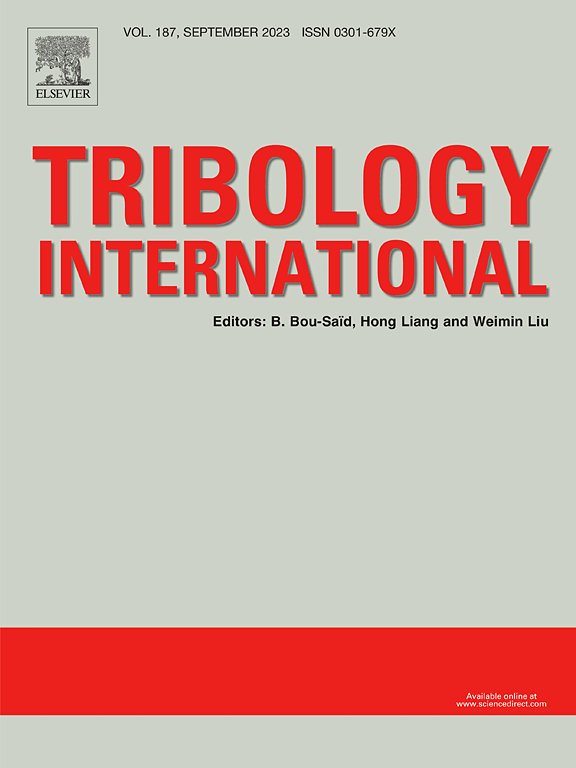Excellent lubrication characteristics of green lubricants from yam polysaccharide in reducing friction and wear for water-lubricated environments
IF 6.1
1区 工程技术
Q1 ENGINEERING, MECHANICAL
引用次数: 0
Abstract
Yam polysaccharide (YP) is a promising environmentally friendly lubricant in water-lubricated environments due to its hydroxyl and carboxyl groups. The tribological performance of YP was evaluated using ball-disc friction tests across four pairs (Si3N4/17–4PH, YN8X/17–4PH, 17–4PH/SiC, YN8X/SiC) under varying conditions (load: 5–60 N, speed: 0.25–0.5 m/s, concentration: 0.5–5.0 wt%). FTIR/Raman spectroscopy, microscopic observation, and EDS were used to analyze the lubrication mechanism, while thermal imaging monitored interfacial temperature changes. Notably, at 2.0 wt% concentration, YP reduced the average coefficient of friction (COF) and wear rate of the 17–4PH/SiC pair by 77.6 % and 86.3 %, respectively. Unlike conventional bio-lubricants limited by load-capacity (COF = 0.07 at 60 N), YP provides a sustainable solution for water-lubricated friction pairs, achieving low wear and biodegradability.
山药多糖绿色润滑油具有优良的润滑特性,可减少水润滑环境下的摩擦和磨损
山药多糖(YP)中含有羟基和羧基,是一种很有前途的水润滑环境润滑剂。在不同的条件下(载荷:5-60 N,速度:0.25-0.5 m/s,浓度:0.5-5.0 wt%),通过球盘摩擦试验(Si3N4/17-4PH, YN8X/ 17-4PH, 17-4PH /SiC, YN8X/SiC)对YP的摩擦学性能进行了评估。利用FTIR/拉曼光谱、显微观察和能谱分析了润滑机理,热成像监测了界面温度的变化。值得注意的是,在2.0 wt%浓度下,YP使17-4PH /SiC副的平均摩擦系数(COF)和磨损率分别降低77.6% %和86.3% %。不像传统的生物润滑油受载荷能力的限制(60 N时COF = 0.07), YP为水润滑摩擦副提供了可持续的解决方案,实现了低磨损和生物降解性。
本文章由计算机程序翻译,如有差异,请以英文原文为准。
求助全文
约1分钟内获得全文
求助全文
来源期刊

Tribology International
工程技术-工程:机械
CiteScore
10.10
自引率
16.10%
发文量
627
审稿时长
35 days
期刊介绍:
Tribology is the science of rubbing surfaces and contributes to every facet of our everyday life, from live cell friction to engine lubrication and seismology. As such tribology is truly multidisciplinary and this extraordinary breadth of scientific interest is reflected in the scope of Tribology International.
Tribology International seeks to publish original research papers of the highest scientific quality to provide an archival resource for scientists from all backgrounds. Written contributions are invited reporting experimental and modelling studies both in established areas of tribology and emerging fields. Scientific topics include the physics or chemistry of tribo-surfaces, bio-tribology, surface engineering and materials, contact mechanics, nano-tribology, lubricants and hydrodynamic lubrication.
 求助内容:
求助内容: 应助结果提醒方式:
应助结果提醒方式:


